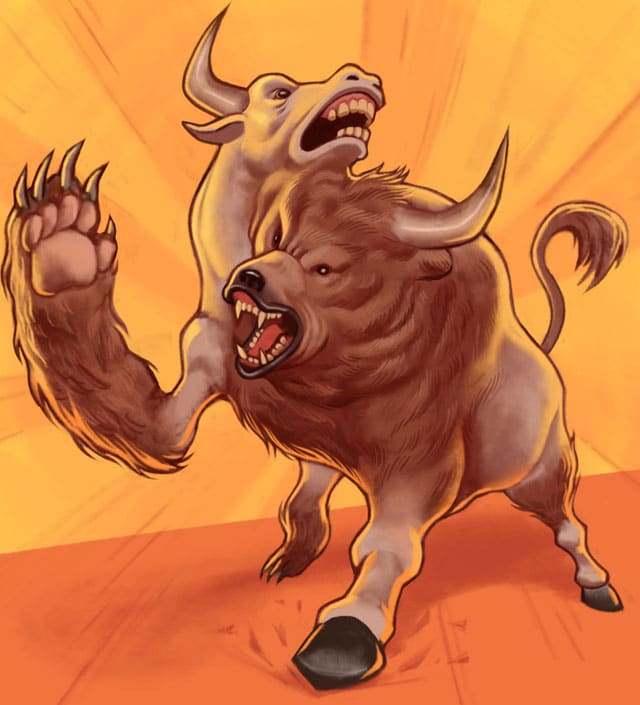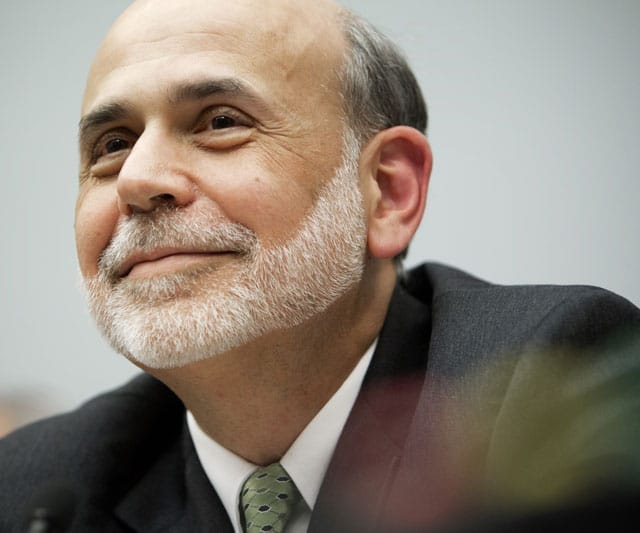The headlines and market analyses of the past few weeks, saying that stocks are in a bull market, may be a comfort even if they are potentially misleading.
They are based on the unassailable fact that the S&P 500 has risen more than 20% from its last bottom, which occurred on Oct. 12. News that the Federal Reserve expects further interest rate increases this year has weighed on the market. Yet if inflation, which rose at an annual rate of 4% in May, drops substantially, the Fed might hold rates steady or even start to reduce them — and the stock market might well keep rising.
But is this really a bull market? It may ultimately turn out to be one, but right now, there are some big caveats.
First, if a bull market means to you that stocks are trending unequivocally upward, then the bull market label is being misapplied right now. It’s not at all clear what the trend of the market will be for the next month or year. Second, even as a retrospective measurement of how the market has performed, this bull market designation is premature, using a stricter definition, one that seems much more sensible to me, as I’ll explain.
The Popular Definition
A frequently repeated definition — and one that, I think, is too simple and potentially dangerous — is that a bull market is one that has gained 20% from its last bottom. (Using the same logic, a bear market is one that has declined 20% from its last peak.)
That sounds straightforward. It’s sometimes called an “official” definition, though it’s nothing of the sort.
The main problem with that definition is that it seems to be saying something about where the market is going and not about where it has been. It’s not much of a bull market if you’re losing money. Yet investors who have been in the stock market since the start of last year have, in fact, lost money.
Remember that to be classified as a bear market, stocks would have to have fallen 20% at least. That means that a bull market would need a gain of at least<em> 25% </em> to wipe out bear market losses. (Say you’ve got $1,000 in the market and it declines 20% to $800; it must gain 25%, or $200, to return to $1,000.)
For investors who hold the broad market through low-cost index funds, as I do, the simple 20% definition means that you have lost money since the market peak. To believe that this is a true bull market, you need to assume that it will keep rising. That’s magical thinking, and with the Fed signaling that it intends to raise interest rates further, it’s dangerous.
Wall Street makes money by being bullish. It profits when people pour their savings into stocks. I’ve pointed out that the annual Wall Street forecasts are wildly inaccurate, usually, by being overly optimistic.
But after major market declines in bear markets, like the one in 2022, they are often excessively pessimistic. In December 2022, the median Wall Street forecast was for the S&P 500 to end 2023 at 4,009, but the market is a lot higher than that now. As they often do midyear, when their forecasts are off the mark, investment firms are belatedly raising their forecasts. Goldman Sachs did that on June 9 in a note to clients saying, “We raise our S&P 500 year-end price target to 4500 (from 4000), representing 5% upside.”
Further bullish revisions by Wall Street firms are likely. But that doesn’t mean much. The forecasts will be revised downward if the market falls sharply.
The fact that the market has risen doesn’t mean it will keep rising — unless investors start to believe it will, act on that bullish belief and propel the market ever higher. A bull market based on emotional enthusiasm and not backed by rising earnings can easily become a bubble.
A History of Fuzzy Metaphors
Bulls and bears and bubbles have been ambiguous metaphors for centuries. These vivid but imprecise terms were popularized by great writers — and miserable investors — in the 18th century.
Alexander Pope, the poet, satirist and hapless investor, talked about bulls and bears in 1720 to describe his hopes for South Sea Co. stock while it was still zooming up in price — and before it became infamous as the disastrous South Sea Bubble.
Pope’s flowery language and mythological references seem strained to 21st-century ears, but his basic meaning is plain: “Come fill the South Sea goblet full,” he wrote. “The gods shall of our stock take care: Europa pleased accepts the Bull, And Jove with joy puts off the Bear.” In other words, let the good times roll!
But the bear soon triumphed.
Jonathan Swift, Pope’s friend and fellow satirist, wrote mournfully of a “mighty bubble” later that year, when South Sea stock collapsed, shattering the British economy and shriveling the fortunes of thousands of foolish bulls — not just Pope and Swift but also genius physicist and inept investor Sir Isaac Newton.
The episode continues to be studied, generation after generation, though multitudes of new investors learn these harsh lessons only through painful experience.
A Sober Solution
Spare yourself some pain.
We’re not going to get rid of the terms bull and bear. They’re too deeply rooted, too widely used and too convenient. But as far as categorizing and periodizing the stock market, there is a better way.
It is the one used by Howard Silverblatt. He is a senior index analyst at S&P Dow Jones Indices, which maintains and produces the two most famous U.S. stock market indexes, the S&P 500 and the Dow Jones Industrial Average.
Silverblatt, who has been in this business for more than 46 years, doesn’t claim to be putting forth “official” definitions, but his position and experience make him as official as anyone in the markets.
He says the S&P 500 may be in a bull market, but he won’t declare it as one until after the index matches its last peak, which was 4,796.56 on Jan. 3, 2022.
Until that happens, by his accounting, and by mine, this is still a bear market.
Note that this retrospective categorizing of the stock market is similar to what the National Bureau of Economic Research does for the economy. The bureau is the closest thing we’ve got to an official arbiter of recessions. It doesn’t make a recession declaration until well after one has started because it simply can’t be sure in real time about a system as complex as the U.S. economy.
Are we in a recession now? There is plenty of data, but we don’t even know that. Nor does the Federal Reserve. Yet it must make decisions anyway, as it sets interest rates.
The labeling of recessions — and of bull and bear markets — is critical in understanding what has already happened, but these labels aren’t all that helpful for acting now or preparing for the future.
An Agnostic View
Silverblatt’s definition of bull and bear markets builds in some room for doubt. But even once a bull market has been declared, using his definition, it’s not obvious how that ought to affect your investment portfolio.
Paradoxically, I’m not even sure that I hope we’re in a bull market.
That’s because I intend to keep investing for years to come. If the market rises, say, another 10% in the next month, putting us squarely in bull market territory by any definition, I’ll be richer now. But say the market then falls 30% in August — and stays low for years.
In that case, the recent bull market announcements will be bitter memories, if they are even remembered.
It’s always better to buy shares cheaply and sell them at higher prices. Last year, when prices were 20% lower than they are now, was an excellent time to be buying stock. Now? It’s not as good as it was then, even though the market is rising now.
Fortunately, long-term investors don’t need to time the market.
Instead of focusing on where stocks may be heading over the summer, consider that over periods of 20 years or longer, the stock market has always risen. But remember that it’s frequently fallen sharply from time to time within those periods.
I try to square that circle by always being bullish about investing for the long run, and nervous about what might happen over the next week or month or year.
Are we in a bull or bear market now? It doesn’t really matter.
I’ll just try not to get swept up in mass frenzy when the market rises, or utterly put off when it falls. Bubbles can be personal disasters. But steady diversified investing has been successful for centuries, through bull markets and bears.
c.2023 The New York Times Company. This article originally appeared in The New York Times.







